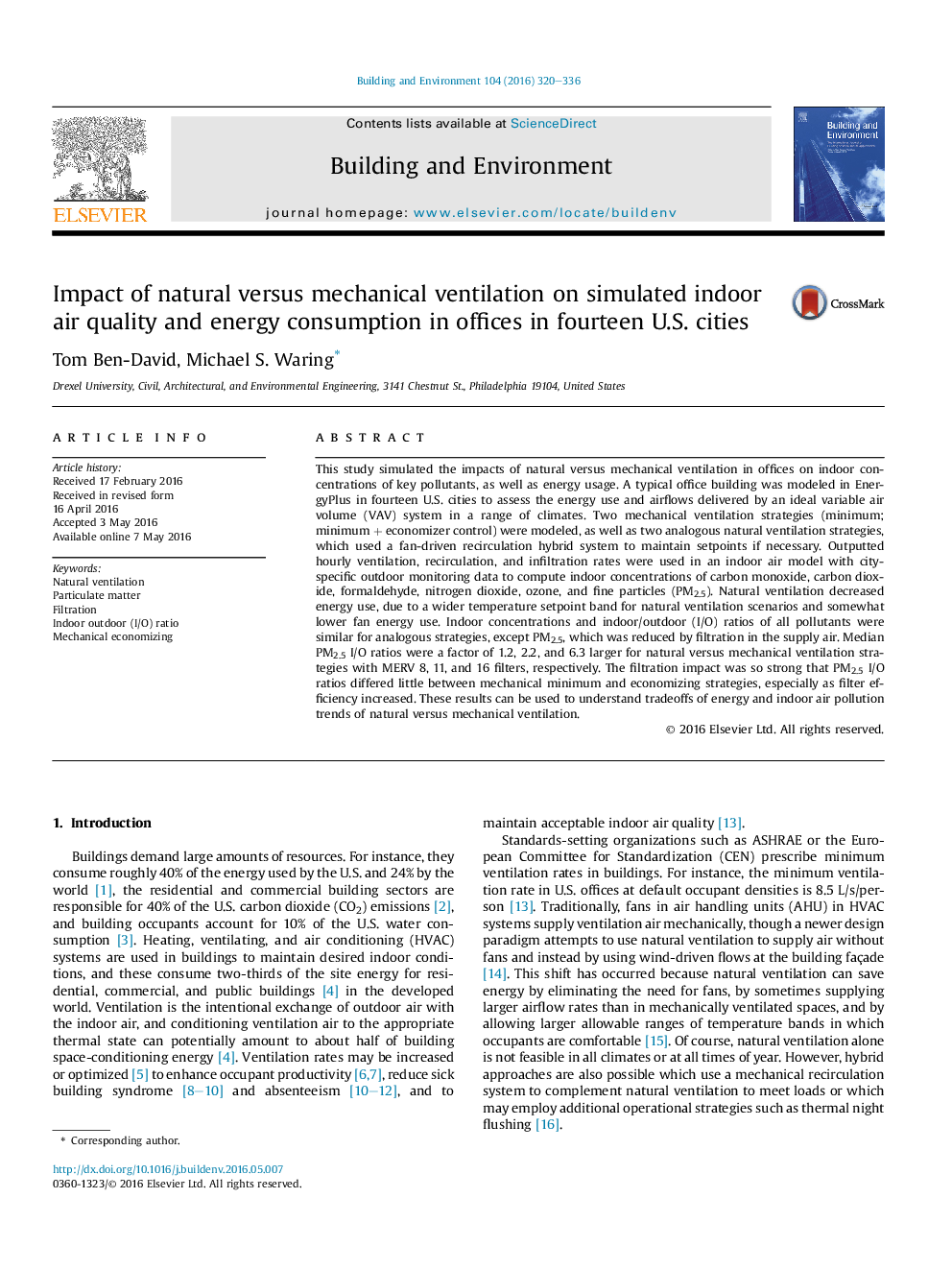| کد مقاله | کد نشریه | سال انتشار | مقاله انگلیسی | نسخه تمام متن |
|---|---|---|---|---|
| 6699238 | 502518 | 2016 | 17 صفحه PDF | دانلود رایگان |
عنوان انگلیسی مقاله ISI
Impact of natural versus mechanical ventilation on simulated indoor air quality and energy consumption in offices in fourteen U.S. cities
ترجمه فارسی عنوان
تأثیر تهویه طبیعی و مکانیکی در کیفیت شبیه سازی هوای داخل ساختمان و مصرف انرژی در دفاتر در چهارده شهر در ایالات متحده
دانلود مقاله + سفارش ترجمه
دانلود مقاله ISI انگلیسی
رایگان برای ایرانیان
موضوعات مرتبط
مهندسی و علوم پایه
مهندسی انرژی
انرژی های تجدید پذیر، توسعه پایدار و محیط زیست
چکیده انگلیسی
This study simulated the impacts of natural versus mechanical ventilation in offices on indoor concentrations of key pollutants, as well as energy usage. A typical office building was modeled in EnergyPlus in fourteen U.S. cities to assess the energy use and airflows delivered by an ideal variable air volume (VAV) system in a range of climates. Two mechanical ventilation strategies (minimum; minimum + economizer control) were modeled, as well as two analogous natural ventilation strategies, which used a fan-driven recirculation hybrid system to maintain setpoints if necessary. Outputted hourly ventilation, recirculation, and infiltration rates were used in an indoor air model with city-specific outdoor monitoring data to compute indoor concentrations of carbon monoxide, carbon dioxide, formaldehyde, nitrogen dioxide, ozone, and fine particles (PM2.5). Natural ventilation decreased energy use, due to a wider temperature setpoint band for natural ventilation scenarios and somewhat lower fan energy use. Indoor concentrations and indoor/outdoor (I/O) ratios of all pollutants were similar for analogous strategies, except PM2.5, which was reduced by filtration in the supply air. Median PM2.5 I/O ratios were a factor of 1.2, 2.2, and 6.3 larger for natural versus mechanical ventilation strategies with MERV 8, 11, and 16 filters, respectively. The filtration impact was so strong that PM2.5 I/O ratios differed little between mechanical minimum and economizing strategies, especially as filter efficiency increased. These results can be used to understand tradeoffs of energy and indoor air pollution trends of natural versus mechanical ventilation.
ناشر
Database: Elsevier - ScienceDirect (ساینس دایرکت)
Journal: Building and Environment - Volume 104, 1 August 2016, Pages 320-336
Journal: Building and Environment - Volume 104, 1 August 2016, Pages 320-336
نویسندگان
Tom Ben-David, Michael S. Waring,
